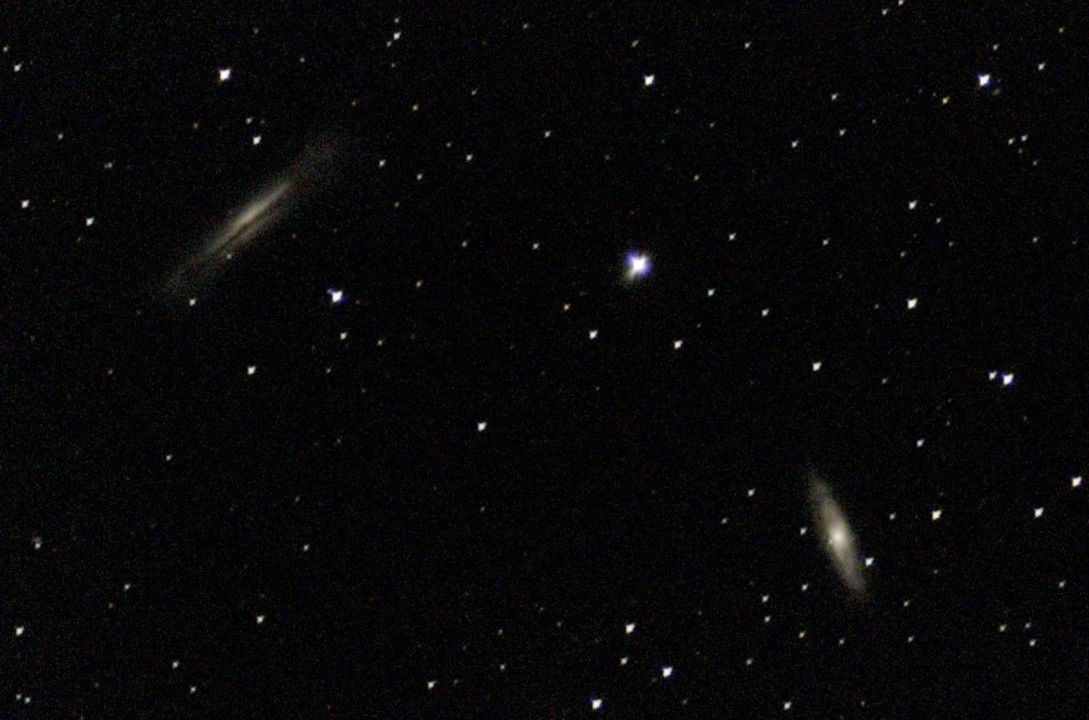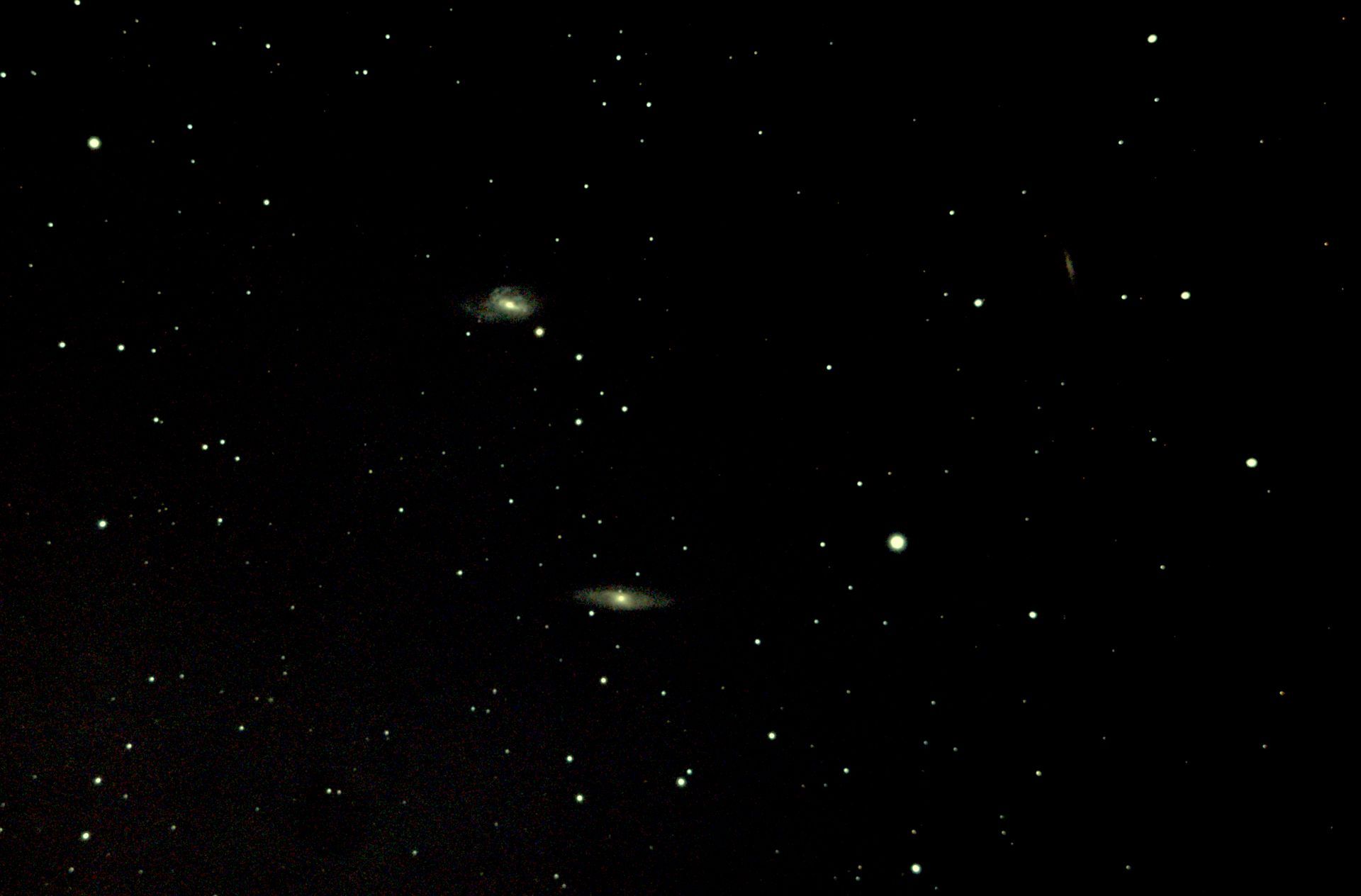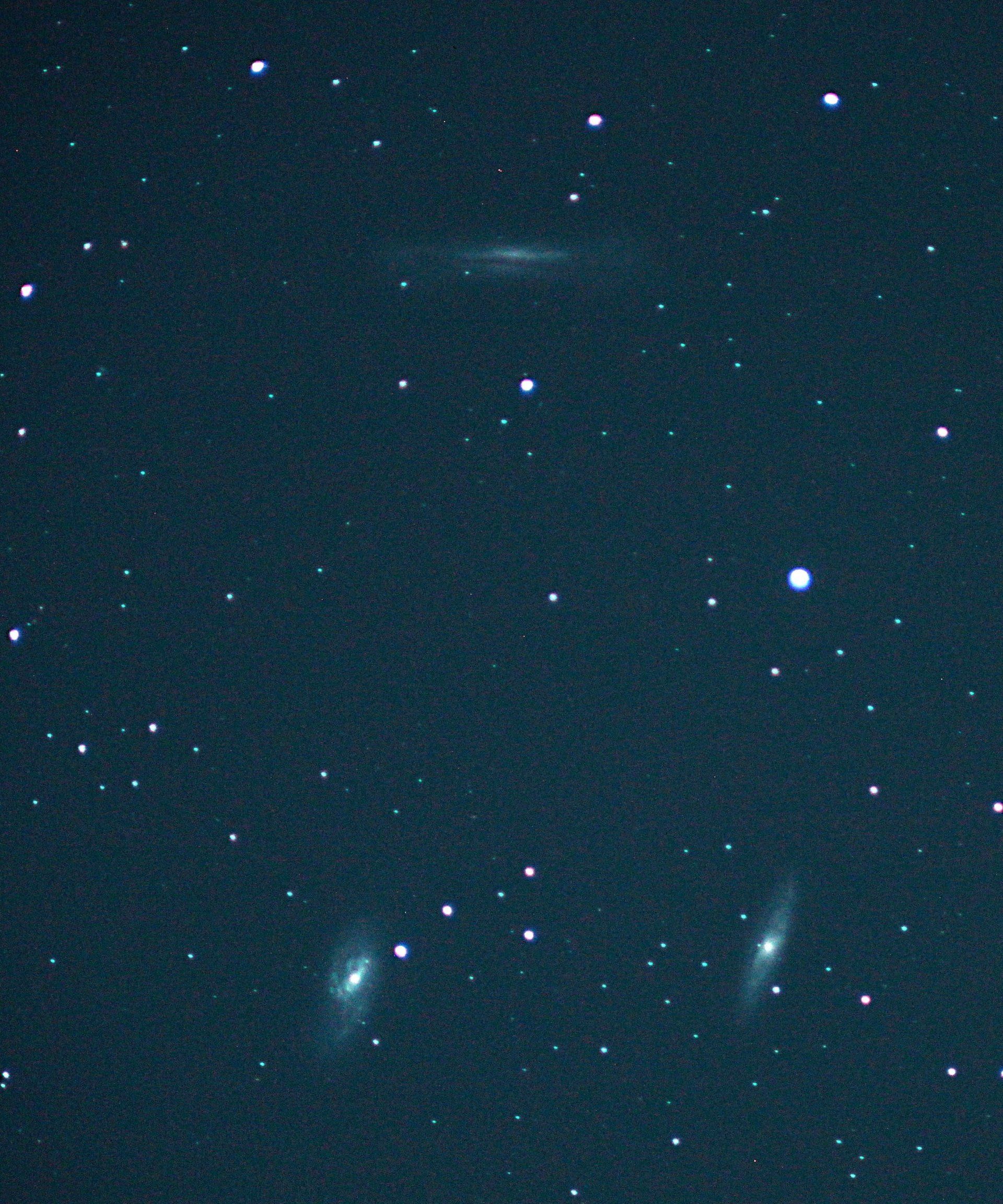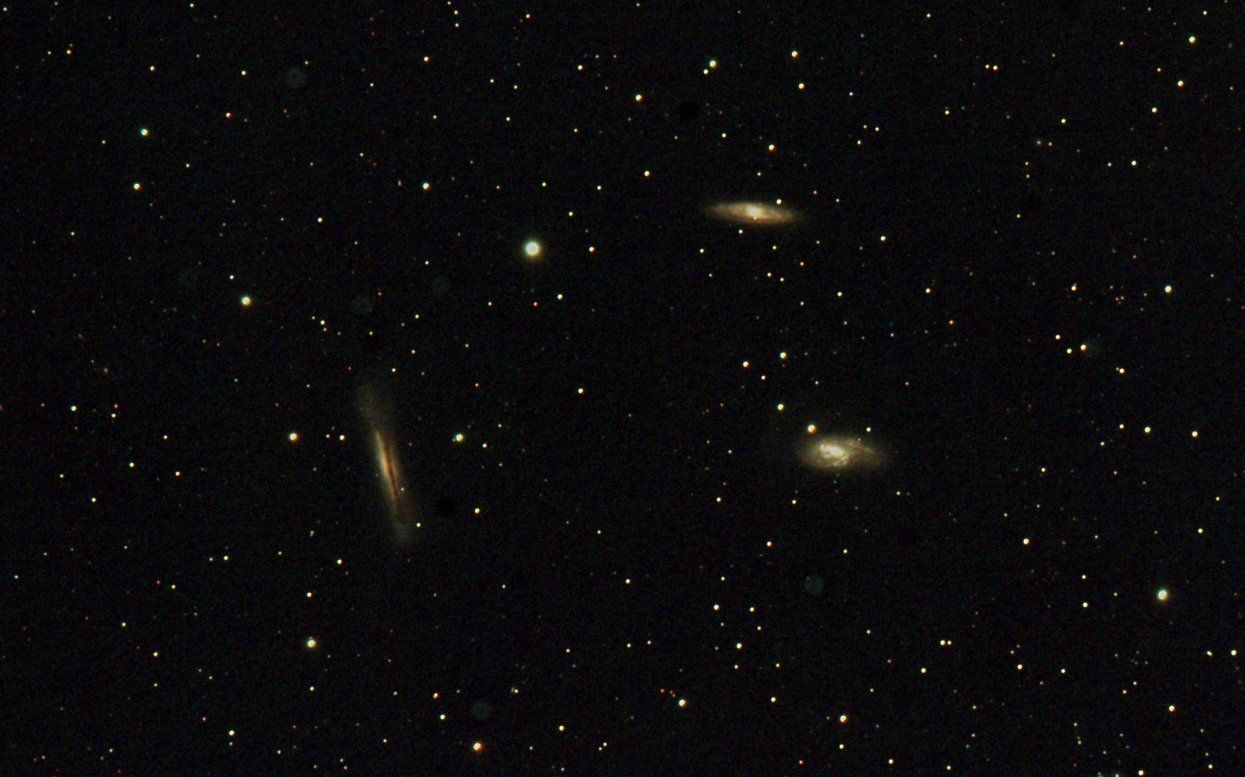M65/66
Messier 65 (also known as NGC 3623) is an intermediate spiral galaxy about 35 million light-years away in the constellation Leo. It was discovered by Charles Messier in 1780. Along with M66 and NGC 3628, M65 forms the Leo Triplet, a small group of galaxies.
M65 was discovered by Charles Messier and included in his Messier Objects list. However, William Henry Smyth accidentally attributed the discovery to Pierre Méchain in his popular 19th century astronomical work A Cycle of Celestial Objects (stating "They [M65 and M66] were pointed out by Méchain to Messier in 1780"). This error was in turn picked up by Kenneth Glyn Jones in Messier's Nebulae and Star Clusters. This has since ramified into a number of other books by a variety of authors.
Messier 66 or M66, also known as NGC 3627, is an intermediate spiral galaxy in the equatorial constellation of Leo. It was discvered by French astronomer Charles Messier on March 1, 1780, who described it as "very long and very faint". This galaxy is a member of a small group of galaxies that includes M65 and NGC 3628, known as the Leo Triplet, or the M66 Group. M65 and M66 make a popular pair for observers, being separated by only 20′.
M66 has a morphological classification of SABb, indicating a spiral shape with a weak bar feature and loosely wound arms. The isophotal axis ratio is 0.32, indicating that it is being viewed at an angle. M66 is receding from us with a heliocentric radial velocity of 696.3±12.7 km/s. It lies 31 million light-years away and is about 95 thousand light-years across with striking dust lanes and bright star clusters along sweeping spiral arms. As of 2018, five supernovae have been observed in M66: SN 2016cok, 2009hd, 1997bs, 1989B, and 1973R.
Gravitational interaction from its past encounter with neighboring NGC 3628 has resulted in an extremely high central mass concentration; a high molecular to atomic mass ratio; and a resolved non-rotating clump of H I material apparently removed from one of the spiral arms. The latter feature shows up visually as an extremely prominent and unusual spiral arm and dust lane structures as originally noted in the Atlas of Peculiar Galaxies.







